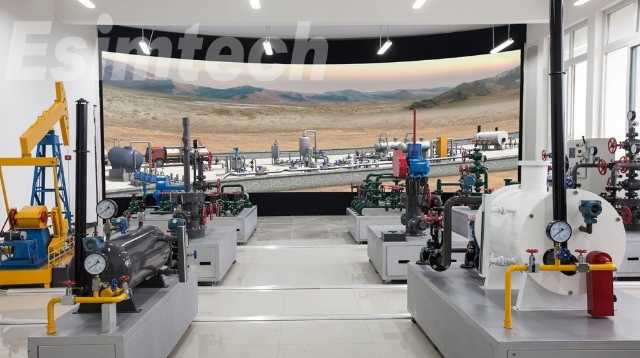Purposes of Oil Recovery Simulation
- Reservoir Characterization: Simulation models help characterize the geological structure, fluid properties, and flow dynamics within a reservoir, providing a comprehensive understanding of the oil-bearing formation.
- Evaluation of Enhanced Oil Recovery (EOR) Techniques: Simulation tools are employed to evaluate the effectiveness of various EOR methods, such as miscible gas injection, chemical flooding, and thermal recovery, in enhancing oil production.
- Optimization of Well Placement and Production Strategies: Simulation models aid in determining the optimal placement of wells, production rates, and injection strategies to maximize oil recovery and minimize operating costs.
- Risk Assessment and Mitigation: Simulation techniques are used to assess potential risks, such as reservoir depletion, fluid channeling, and formation damage, enabling engineers to implement mitigation strategies.
Types of Oil Recovery Simulation
- Black-Oil Models: These simplified models assume that oil is a single-phase fluid, providing a quick and efficient approach for initial reservoir evaluation.
- Compositional Models: More complex models that account for the multiple components of crude oil, providing a more accurate representation of fluid behavior and interactions.
- Geomechanical Models: These models consider the mechanical interactions between fluid flow and rock deformation, particularly important in reservoirs with significant pressure changes or unconventional formations.
- Dual-Continuum Models: These sophisticated models capture the complex flow behavior in fractured reservoirs, where fluid movement occurs in both the matrix and fracture network.

Applications of Oil Recovery Simulation
- Field Development Planning: Simulation models are used to plan the development of a new oil field, determining the optimal well locations, production rates, and EOR strategies.
- Performance Monitoring and Optimization: Simulation tools are employed to monitor reservoir performance and identify areas for improvement, enabling engineers to optimize production strategies and maximize oil recovery.
- EOR Feasibility Studies: Simulation models are used to evaluate the feasibility of various EOR techniques for a particular reservoir, considering technical and economic factors.
- Regulatory Compliance: Simulation tools can be used to demonstrate compliance with regulatory requirements, such as minimum reservoir pressure maintenance and environmental protection.
Benefits of Oil Recovery Simulation
- Increased Oil Recovery: Simulation-based optimization strategies can lead to significant increases in oil recovery, extending the life of a reservoir and maximizing economic returns.
- Reduced Operational Costs: Simulation models help identify and mitigate potential operational issues, reducing downtime and optimizing resource allocation.
- Improved Risk Management: By simulating various scenarios and assessing potential risks, engineers can make informed decisions that minimize operational risks and maximize project success.
- Enhanced Understanding of Reservoir Dynamics: Simulation provides valuable insights into the complex interactions within a reservoir, enabling engineers to develop a deeper understanding of reservoir behavior and performance.
Conclusion
Oil recovery simulation has become an indispensable tool in reservoir engineering, providing a powerful means to optimize production strategies, maximize oil recovery, and minimize operational costs. As the demand for energy continues to grow, oil recovery simulation will play an increasingly important role in ensuring the efficient and sustainable production of oil from underground reservoirs.








